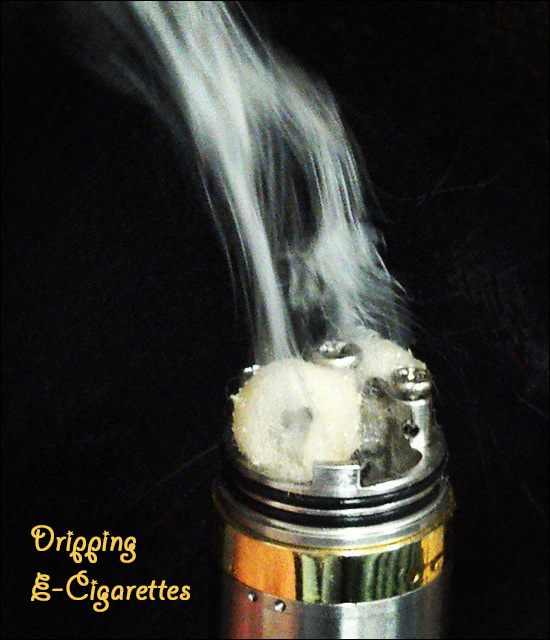The sale of cigarettes is in a steady decline. However, that doesn’t mean teenagers and adults aren’t getting their nicotine fix. E-cigarettes, which use battery-heated coils to turn liquid into vapor, are an $8 billion market, reports Bloomberg, and almost half of worldwide sales – 43 percent – are in the United States.
A potentially new risk is emerging among younger e-cigarette users, though. It’s called “dripping.”
Often referred to as “vaping,” which the Oxford Dictionary named word of the year in 2014, e-cigarettes are often sold as a safe alternative to tobacco-filled cigarettes.
The liquid inside e-cigarettes comes in different flavors and, in most cases, is laced with nicotine. Vaping is extremely popular, especially among teenagers, despite the fact that it’s illegal for anyone under 18 to purchase e-cigarettes, according to federal regulation.
In December last year, the Surgeon General sounded the alarm, warning that e-cigarettes are now the most commonly used tobacco product among young people.
Much like it sounds, dripping is the process of bypassing part of the e-cigarette mechanism and placing drops of the liquid directly onto the heated coils. Specialized dripping atomizers can be purchased to create the effect.
According to the National Council on Alcoholism and Drug Dependence, “Dripping” creates a much larger, more flavorful cloud of vapor and a more powerful hit of nicotine.
E-Cigarettes and Dripping Statistics
The Journal of Pediatrics published a study last month entitled “E-Cigarettes and “Dripping” Among High School Youth. Researchers uncovered some stark data:
- Out of 1,874 high school students, 1,080 admitted to having used e-cigarettes
- Of those, 26 percent – 282 – had also tried “dripping”
- 64 percent of the teens that “dripped” said they did it for the bigger blast of nicotine and a tingling sensation in the back of the throat
Aside from the fact that nicotine is one of the most addictive substances on the market, “dripping” poses other serious concerns. Suchitra Krishnan-Sarin, professor in the department of psychiatry at the Yale School of Medicine, was the lead author of the e-cigarette and “dripping” research.
“Emerging data is also showing that e-cigarettes contain many other chemicals like propylene glycol and glycerine and they also contain a lot of flavor chemicals,” she tells CNN. “Now, all of these are volatile and when they’re heated with high temperatures as we see with dripping, you could produce high levels of carcinogenic compounds.”
Some critics claim that companies selling e-cigarettes market to younger people by creating and hyping flavors like bubble gum or mango and that a segment of teenage users might not realize the presence of nicotine in the flavored liquid.
Krishnan-Sarin says that the teen brain is especially sensitive to nicotine. So even a minimal amount of “vaping” can lead to physical addiction and the desire to vape more frequently. There are quite a few unknowns as it relates to e-cigarettes and parents should not fall for the idea that it’s a harmless pastime.
“What I always tell parents is that we know very little of the short and long-term effects of e-cigarettes,” Krishan-Sarin says.
Related:
We Were Wrong About Smoking – It’s Worse Than We Thought
CDC Research About Cigarette Smoking Habits in the United States
Why Do People Get Addicted To Drugs and Alcohol?
The Quit Smoking Timeline and What Happens to the Body When You Quit






